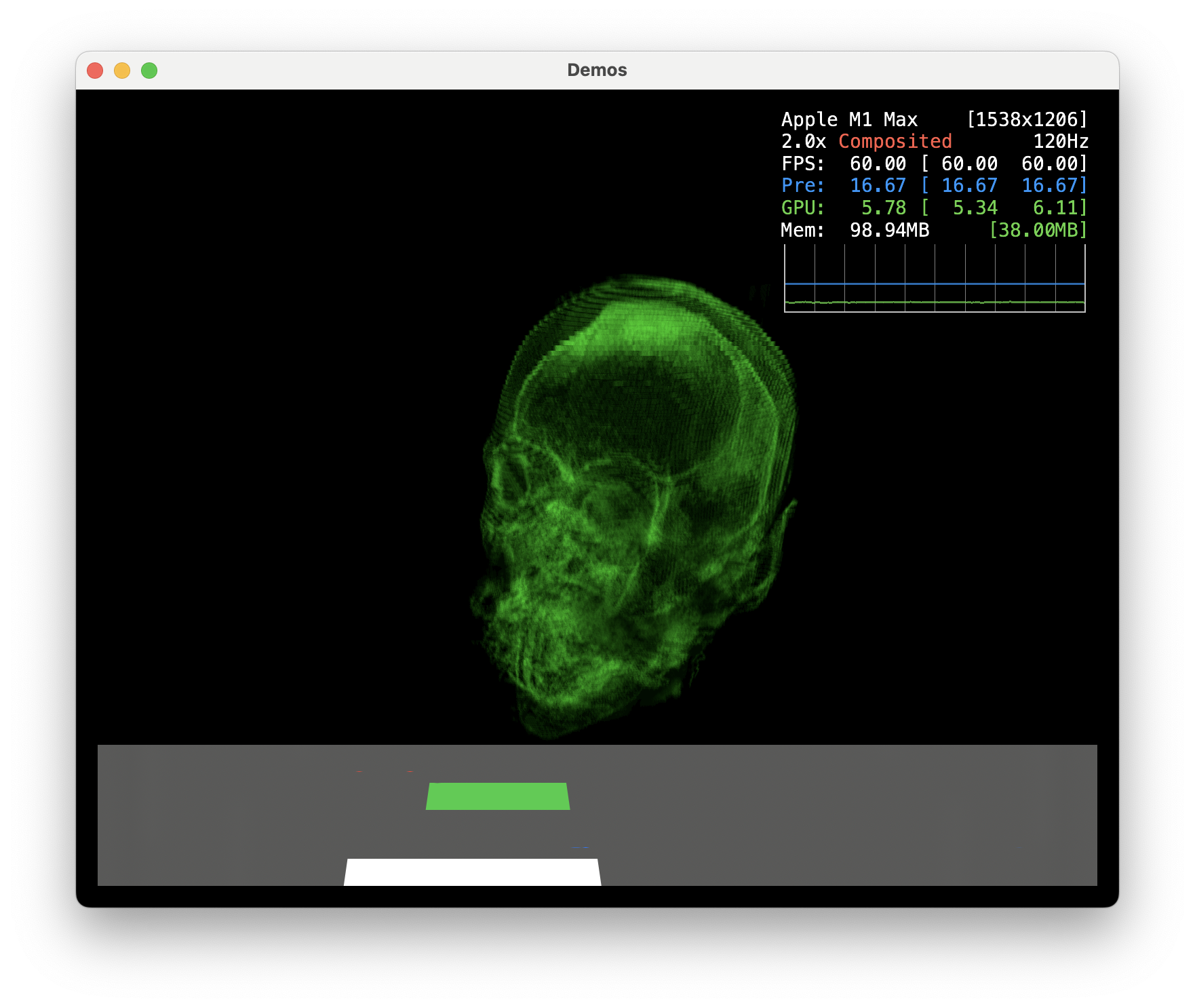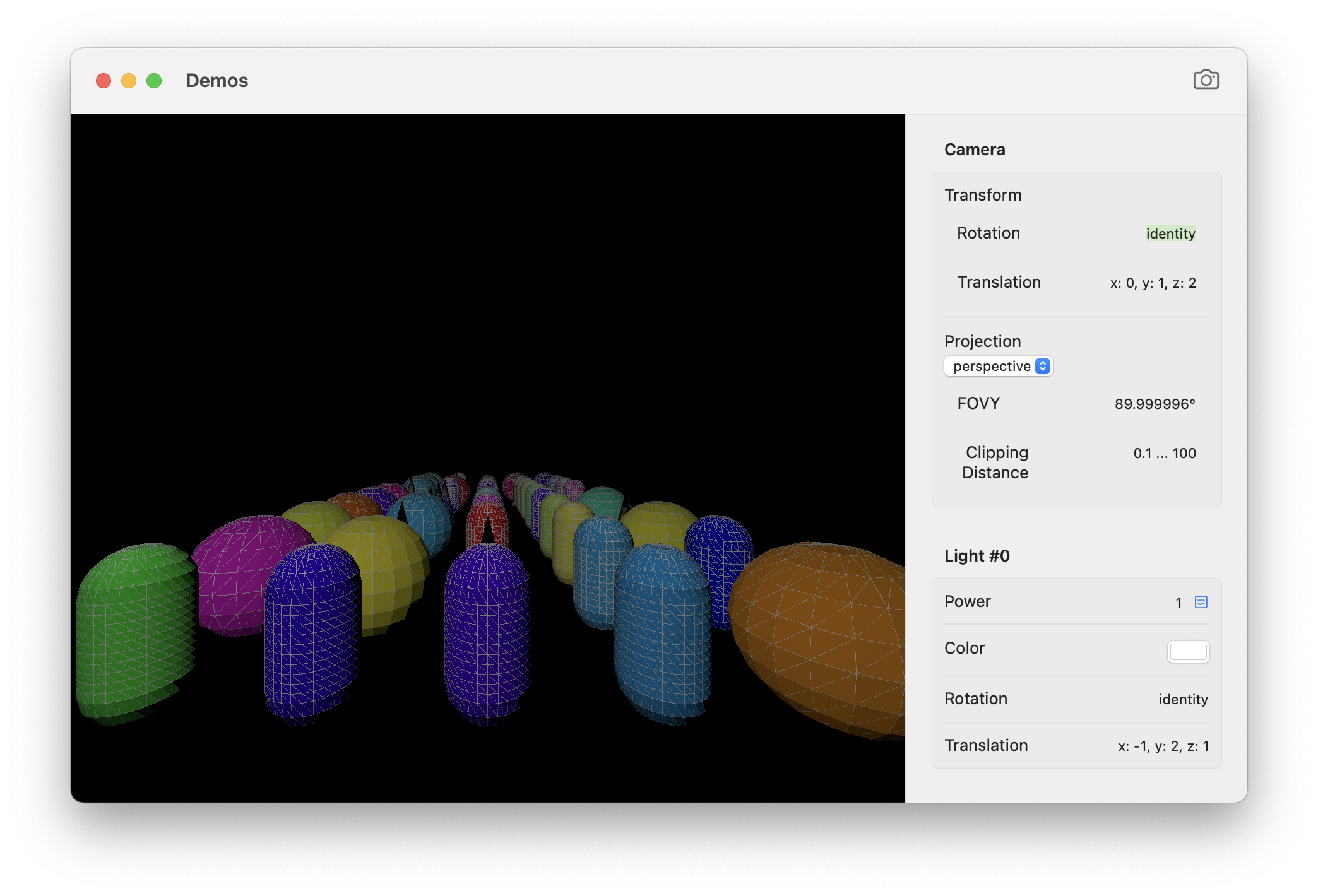Yet another Metal Rendering engine experiment…
Post-multiplication, Column-Major, Right-handed, Y up
- Tie into WASD/Game Controller system (from RenderKit - move code to Everything)
- Render the position of lights
- Learn from RenderKit2 & RenderKitClassic
- More type-safety. Especially pipeline attributes
- Async. (Good luck)
- Outputs
- A unified "renderable" system. Can render to any of multiple locations - MTKView, "raw" CAMetalLayer, offscreen textures, VistionKit immersive spaces etc.
Built-in offscreen renderer(Working but API can be fixed)- Built-in support for
MTKViewand CAMetalLayer - VisionKit 'CPSceneSessionRoleImmersiveSpaceApplication' output
- (The more outputs the less fragile the APO will be)
- Simpler API for just getting shit on-screen
- Create a simple render API that takes a single pipeline
- RenderEnvironment variables modelled after SwiftUI.Environment for safety
- Use Function-builder for pipelines/stages etc
- Cleaner render model that more closely matches Metal.
- Built-in support for RenderGraph editor (use NodeEditor)
- Work with multi-sample, ray tracing
- Figure out how to #include metal headers across packages (likely not possible).
- Get more helper code of RenderKit and into MetalSupport etc
- Use Spatial framework
- Use the shape code from Spatial to bring in a
shape3dtype that can export MTKMeshes* Simple SwiftUI Canvas style line drawing mode. - Some of the rotation code here may be useful - what else is new in Spatial?
- Use the shape code from Spatial to bring in a
- Bring over my Projection package (3d vector graphics)
- Take advantage of Swift macros (macro to encode struct into a buffer compatible with SwiftUI)
- Sort out the various projection APIs

